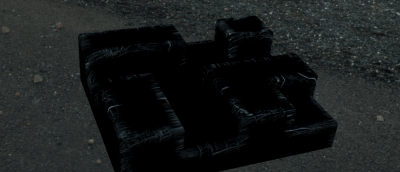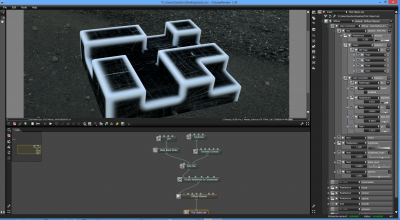Page 2 of 2
Re: Various Texturing Difficulties
Posted: Tue Aug 13, 2013 12:39 pm
by juanjgon
Yes ... I think that the issue is to know what is the best workflow to layer texture maps / procedurals as input for one material parameter.
-Juanjo
Re: Various Texturing Difficulties
Posted: Tue Aug 13, 2013 1:10 pm
by gordonrobb
Had a mess about based on some of thoughts on how the mix and multiply nodes work.
Think I'm getting somewhere. Need to get back to work, but will post my thoughts on how to do this later if anyone is interested.
Re: Various Texturing Difficulties
Posted: Tue Aug 13, 2013 1:36 pm
by gordonrobb
Yes, definitely happy that I know what's going on.
Re: Various Texturing Difficulties
Posted: Tue Aug 13, 2013 4:21 pm
by xxdanbrowne
gordonrobb wrote:Will post my thoughts on how to do this later if anyone is interested.
If you wouldn't mind: could you write a couple soundbites on your findings please?
What you're doing is pretty interesting.
How to mix images
Posted: Tue Aug 13, 2013 9:25 pm
by gordonrobb
OK, so here's the skinny on the Multiply and Mix Nodes.
Bear in mind what I'm trying to do is have both a dirt map (using it to have white at the corners for things like increased spec on the edges etc)
Multiply is fairly simple. Each pixel's float value 0-1 is multiplied by the same pixel of the second image. What this means in the case of what I was trying to achieve with the dirt map, is where the edges are white is multiplied by where the scratches are, meaning that all you end up with is scratches where the dirt map was. See below.

The mix node is the one that I need. It basically takes the float value of each pixel and mixes it based on either the percentage value, or an image. (Haven't fully investigated using an image yet, but it is definitely interesting. What this means is where there is full white for the dirt map, and full white for a scratch, the result is full white. But where there is only one it becomes 50%. This is no good for what I'm trying to achieve as I want all of the dirt to be full white, and all of the scratches to be full white. Answer is to use the Colour Correction Node. Input the output of the mix node into the Texture node, and increase the Brightness Scale to 2 (which is what's needed as the mix is 50%). This gives the result shown below (which is what I was after), and when used for Diffuse, spec, bump etc in different amounts achieve the images shown previously.

And to show you what kind of thing I'd use this for, the image below is the bump map for teh coloured version above. It has a Dirt map multiplied with a Procedural, output then multiplied with another Dirt Map to make the edges solid white, doubled, then this output multiplied with scratch map, again doubled.
Re: Various Texturing Difficulties
Posted: Tue Aug 13, 2013 10:58 pm
by gordonrobb
And using my new understanding

only image is a tileable burlap image
Re: Various Texturing Difficulties
Posted: Wed Aug 14, 2013 3:35 am
by xxdanbrowne
Awesome. Thanks for the explanation.